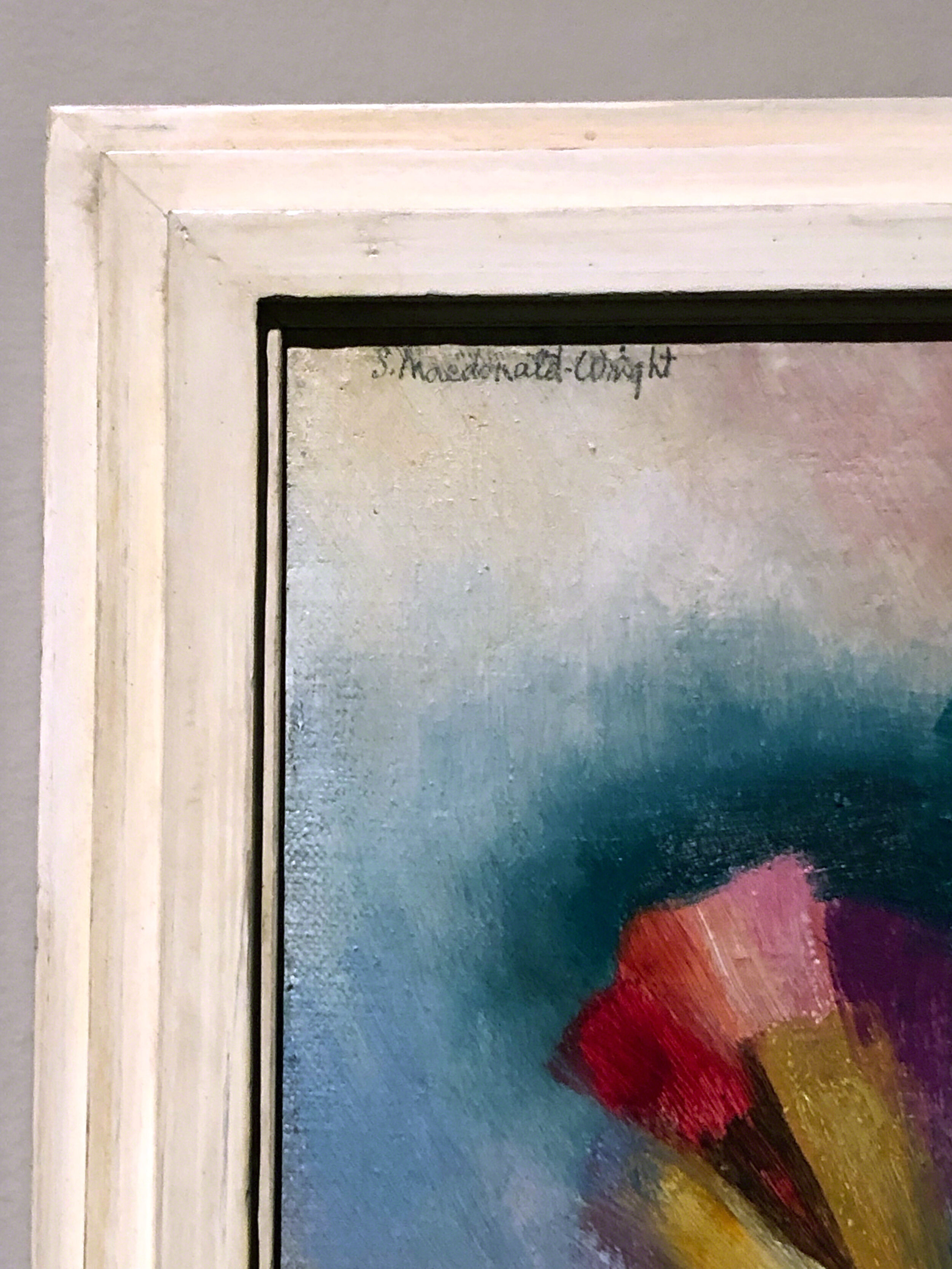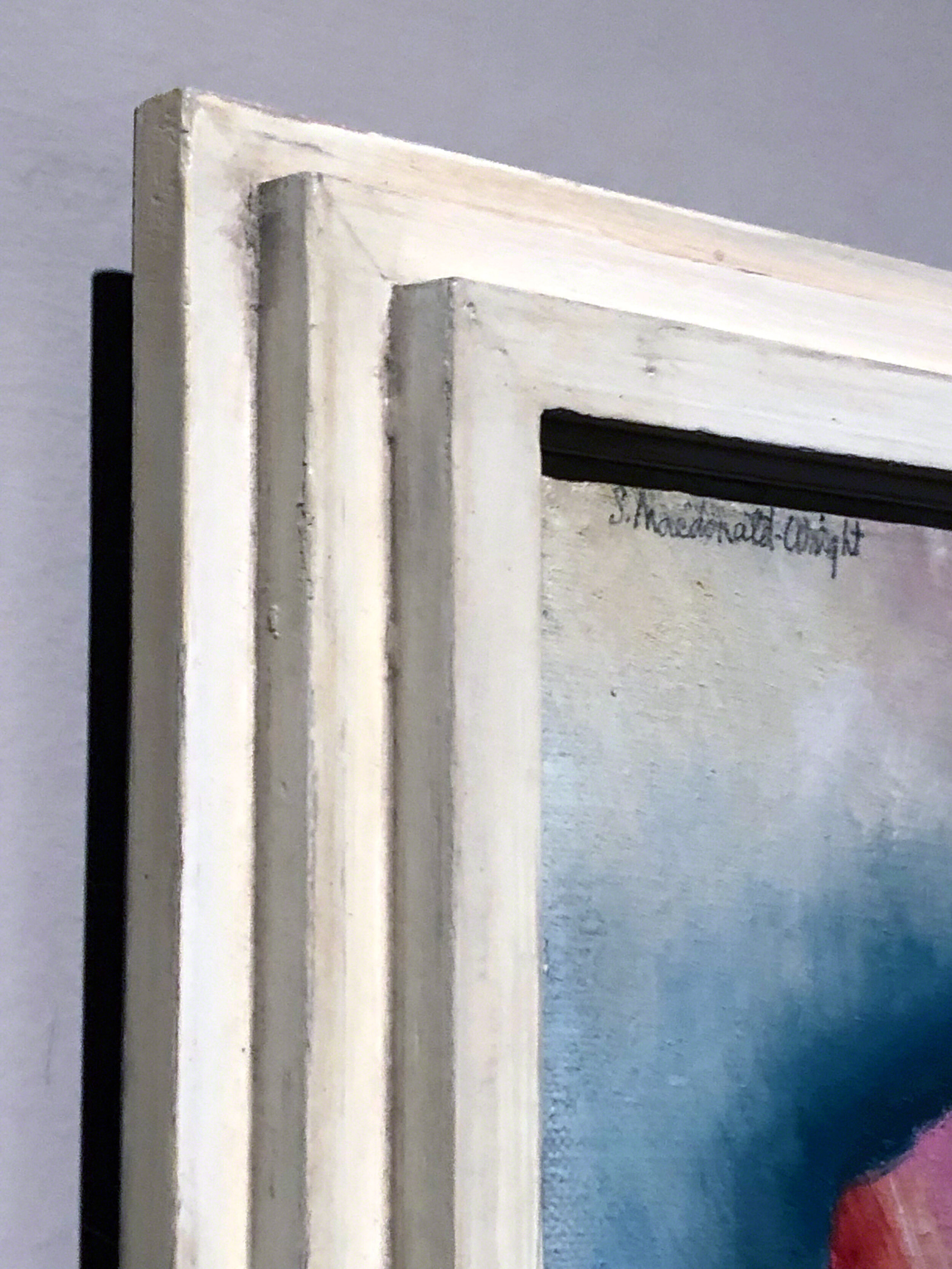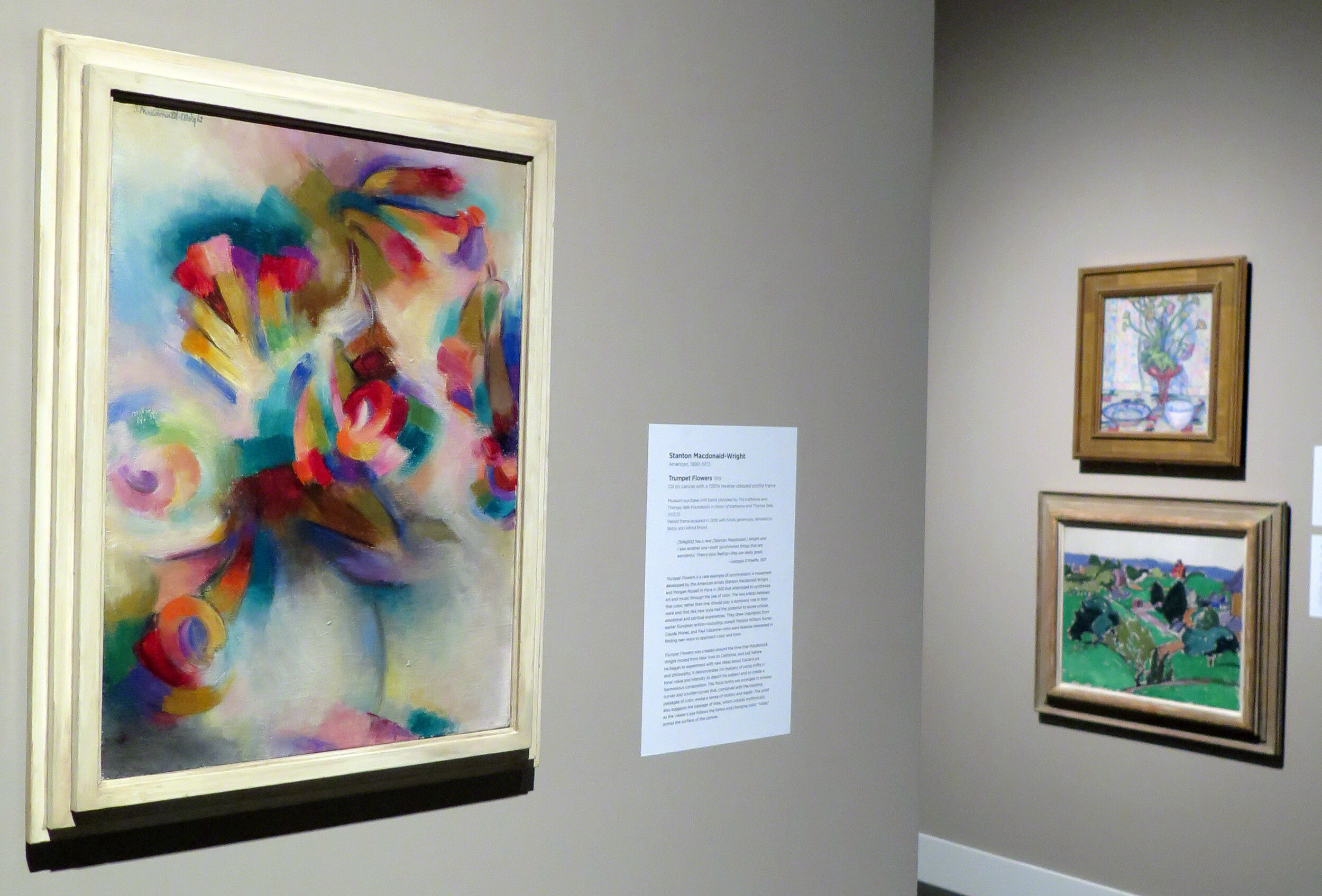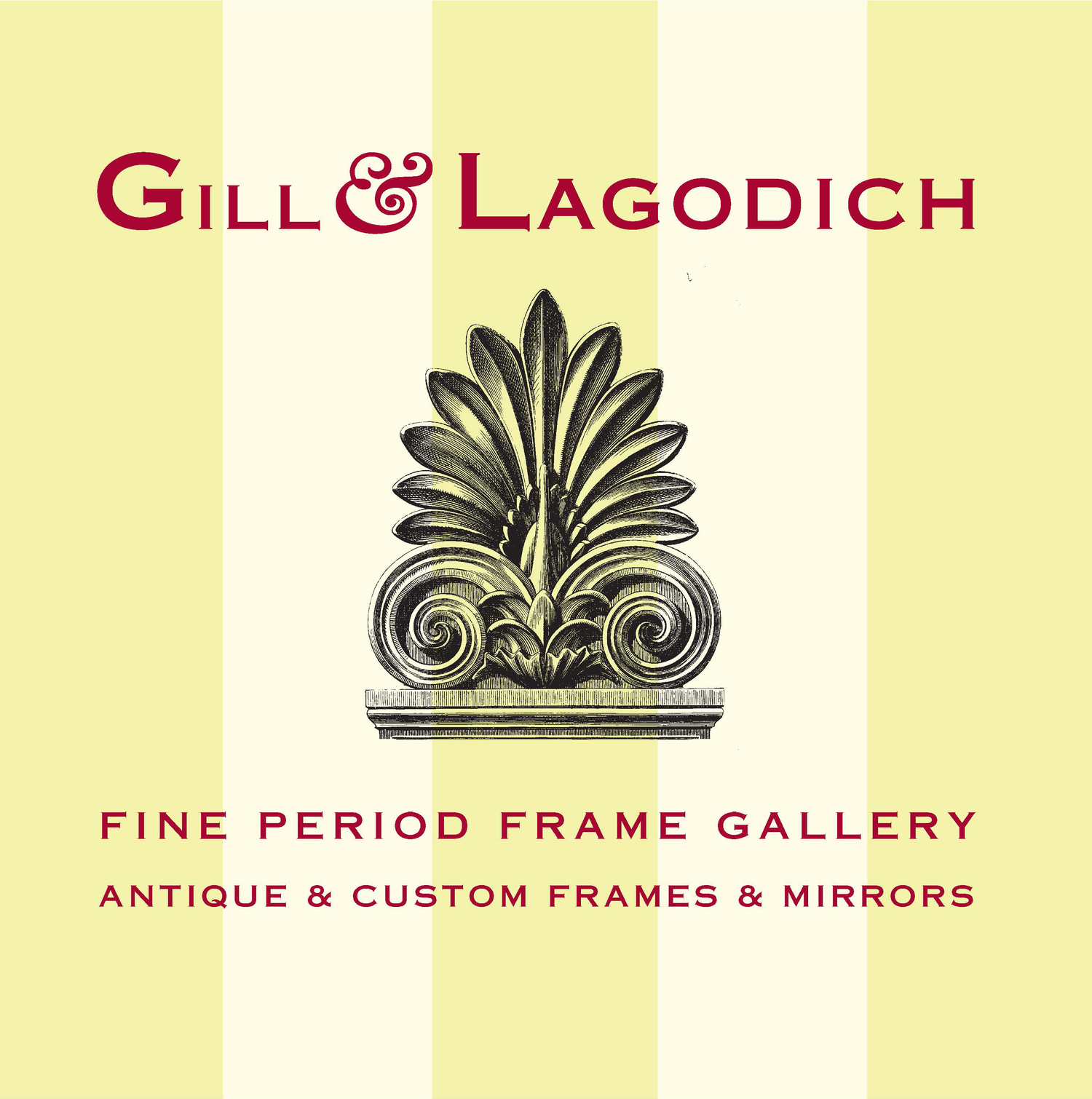MINT MUSEUMS, NORTH CAROLINA
Gill & Lagodich have framed the following paintings for The Mint Museum (listed alphabetically): George Wesley Bellows, Gorge and Sea, 1911: John Leslie Breck, Suzanne Hoschede-Monet Sewing, 1888: William Merritt Chase, Beach at Shinnecock, ca. 1891; Thomas Cole, American Lake Scene, 1846; Stuart Davis, Town and Rolling Hills, 1915; Daniel Garber, Summer Afternoon, ca. 1902-05; William James Glackens, Good Harbor Beach, 1919; F. Childe Hassam, Olde Lyme, 1903; Robert Henri, My Friend Brien, 1913; Max Kuehne, East River Harbor, 1913; George Benjamin Luks, Carnival Scene, 1918; Edward Willis Redfield, In The Forest of Fontainebleau, ca. 1890; Theodore Stamos, Shofar in the Stone, 1946; and Stanton MacDonald-Wright, Trumpet Flowers, 1919.
Please check back soon as we update images.
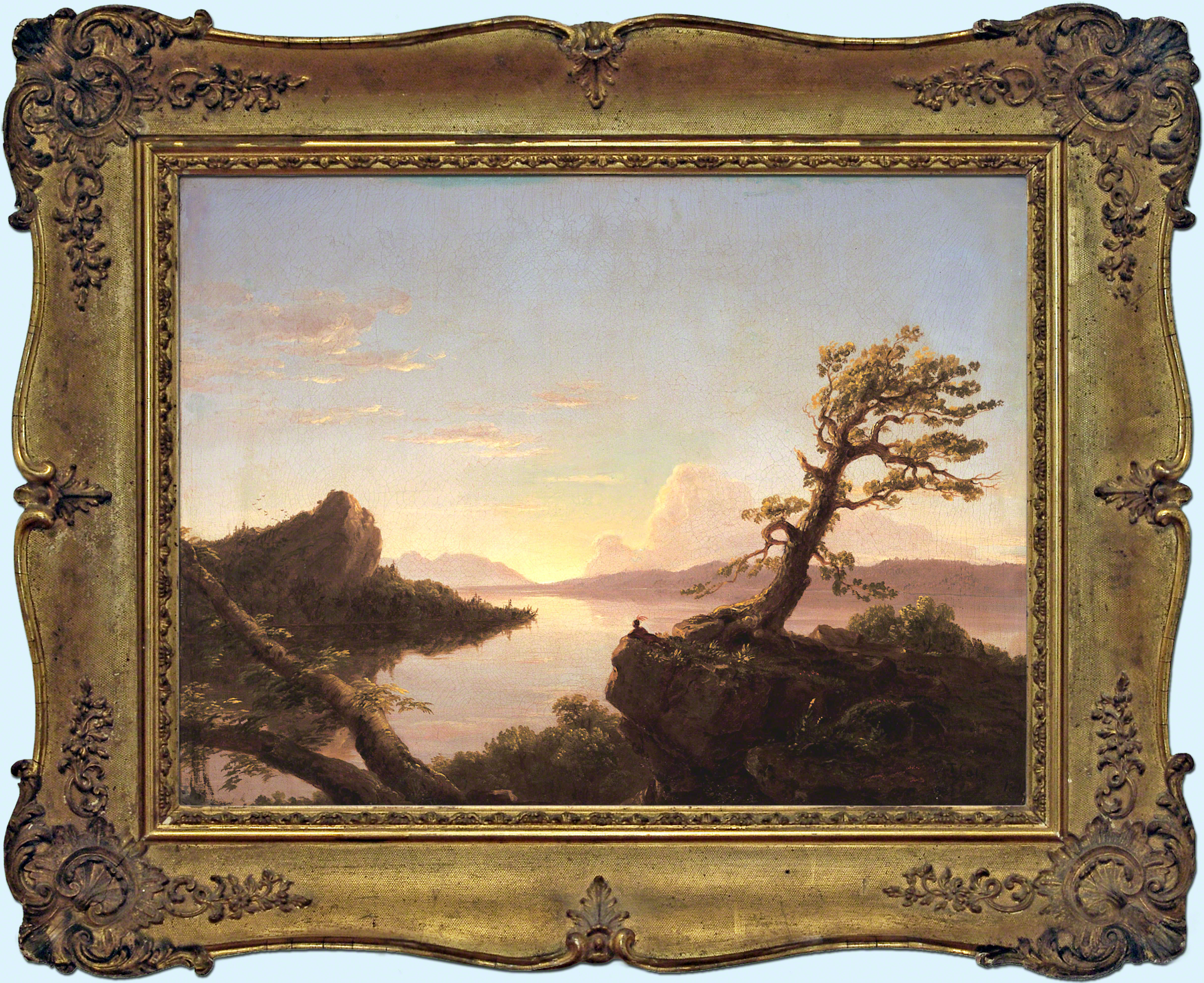
THOMAS COLE (1801–1848)
American Lake Scene, oil on canvas, 1846, 18" x 24"; c. 1820-40 Cole-style American painting frame; gilded applied composition ornament and applied netting over wood. Molding width: 4-1/8” Gift of Mr. and Mrs. William S. Lowndes, 1976.25 "Thomas Cole was a pioneer of American landscape painting. Seeking to raise the status of his genre, he argued that a landscape could be the entire subject of a work of art, not merely backdrop for a story: a view that can be linked to Americas growing concern with the spiritual and therapeutic pleasures of the natural world. Combining a scenic (probably invented) view with a lone Native American figure, this painting is one of a number of works that Cole created towards the end of his life that addressed the issue of the passage of time. The figure can be interpreted not as savagenoble or otherwise, a stereotype that was dominant in then-current representations of Native Americans but rather as contemplative, pausing to consider the passage of time, symbolized here by the setting sun."

WILLIAM MERRITT CHASE (1849–1916)
Beach at Shinnecock, c. 1891, oil on board, 5-7/8" x 8". c. 1900 American painting frame; gilded oak. Molding width: 3-1/4”
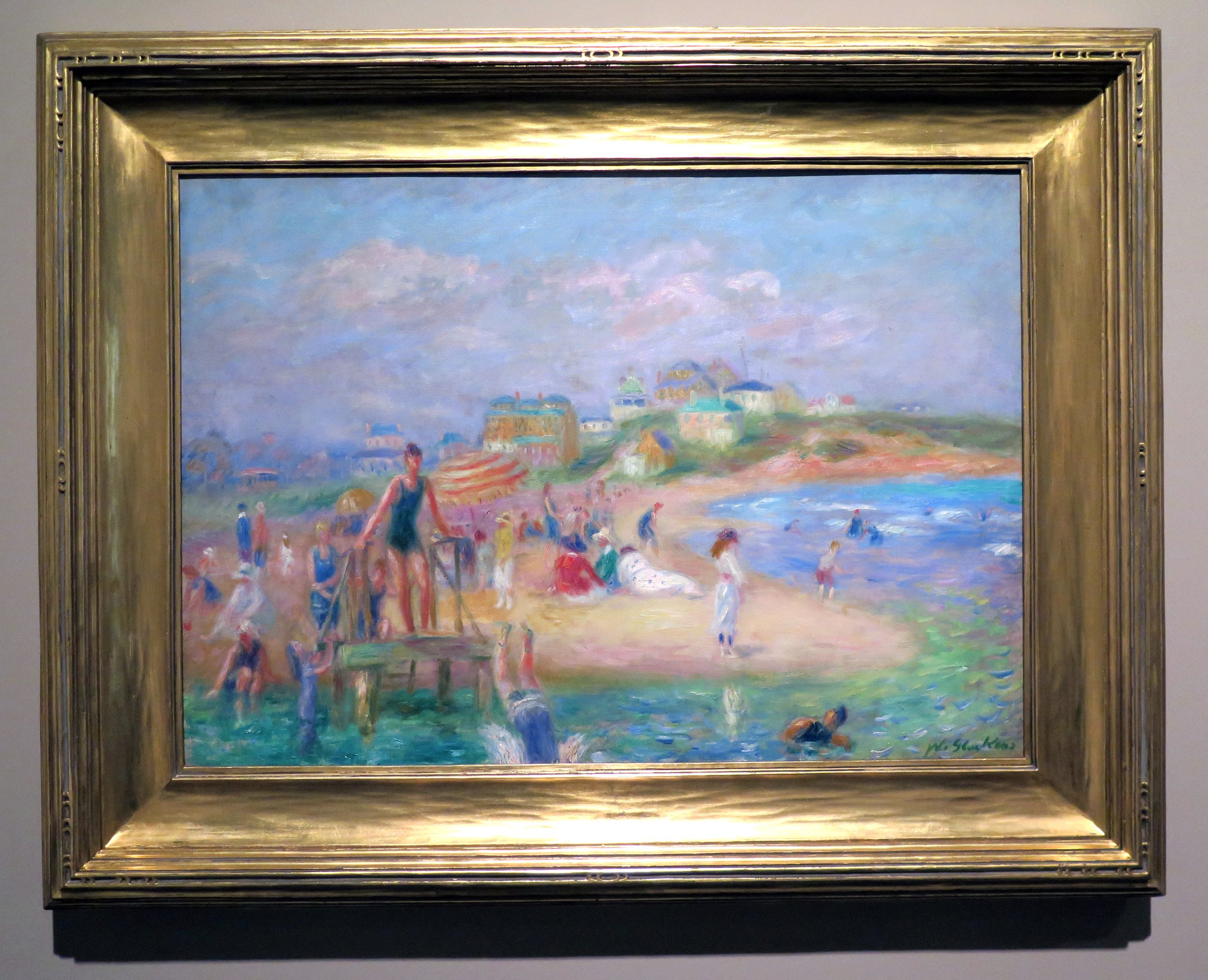
WILLIAM JAMES GLACKENS (1870–1938)
Good Harbor Beach, 1919, oil on canvas, 21 x 30 inches. period c. 1920 American Arts and Crafts painting frame, Newcomb-Macklin, New York/Chicago makers, metal-gilded hand-carved wood, molding width 5 in.
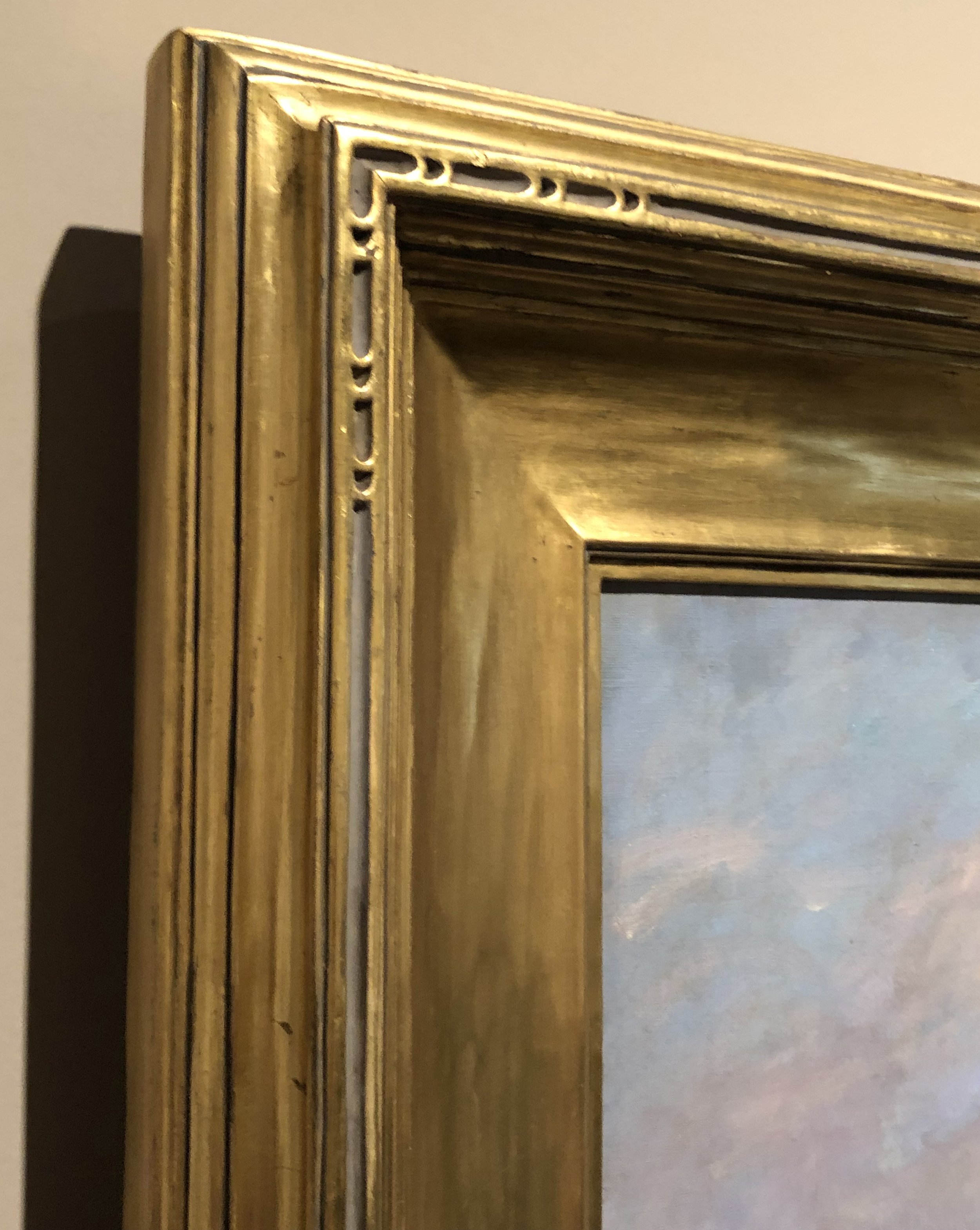
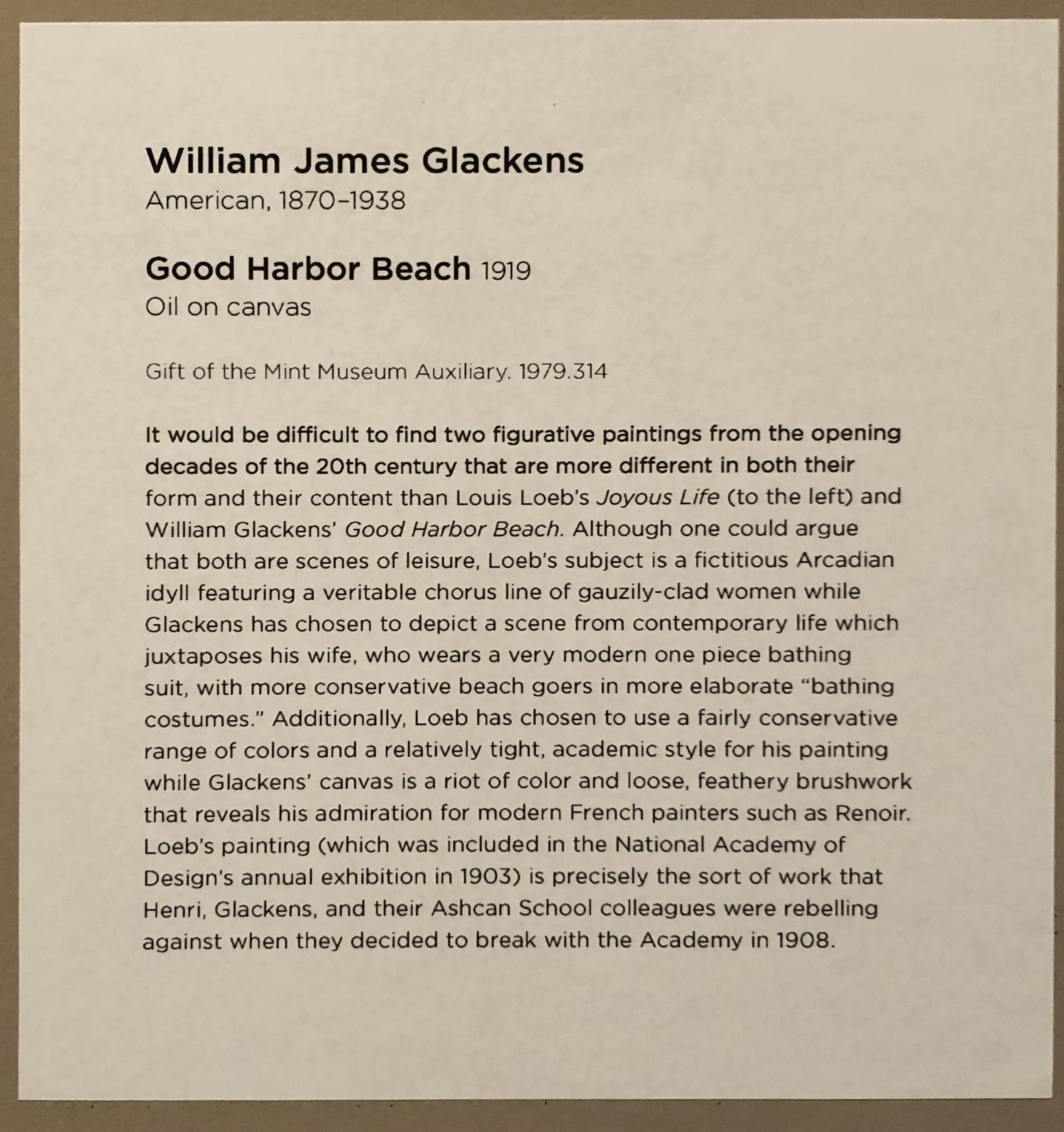
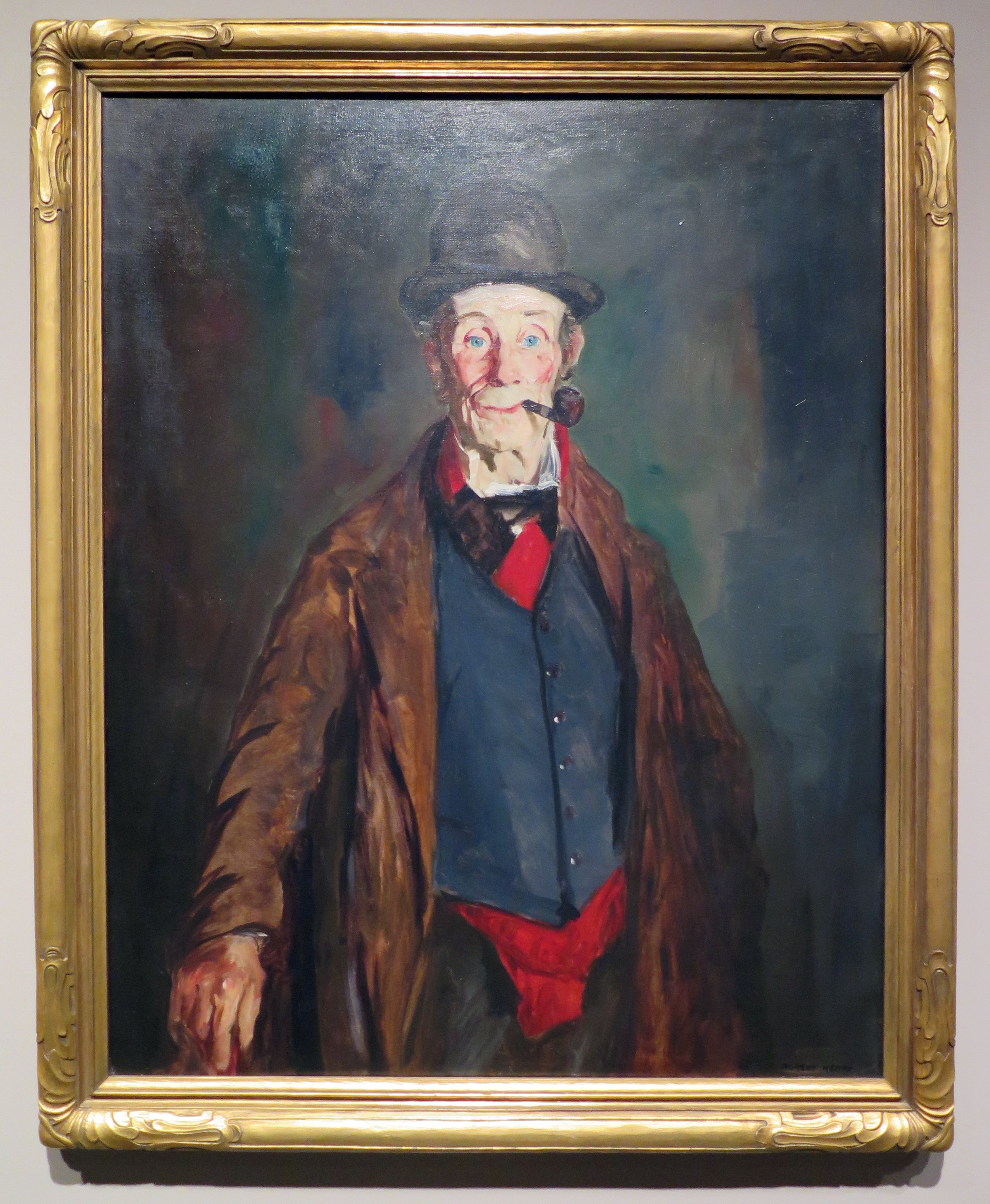
ROBERT HENRI (1865–1929)
My Friend Brien, 1913, oil on canvas, 41” x 33” c. 1920 American Arts and Crafts frame, gilded hand-carved wood. Molding width: 3” “Robert Henri was a charismatic and independent-minded teacher and artist, but he is best known today as the leader of the so-called “Ash Can School” of urban realists. His anti-academic stance that art should be based on the vibrant and frenetic life on the streets ruffled more than a few critical feathers, but served to unite the artists that gathered around him, such as George Bellows, George Luks, and Everett Shinn. Henri devoted much of his career to painting portraits—not only of prominent society figures, such as Gertrude Vanderbilt Whitney, but of people from all walks of life. Henri painted this picture of Brien O’Malley, his friend and guide, during his first visit to the town of Achill, Ireland, in 1913. With its bold brushwork and its unflinching depiction of O’Malley’s weather-beaten features, My Friend Brienis a clear testament to Henri’s belief that a painting should be as direct and frank a representation of its subject as possible. He wrote in 1915, just two years after completing this painting: “The people I like to paint are ‘my people,’ . . . people through whom the dignity of life is manifest . . . wherever I find them . . . my impulse immediately is to tell about them through my own language—drawing and painting in color.” —Mint Museum label

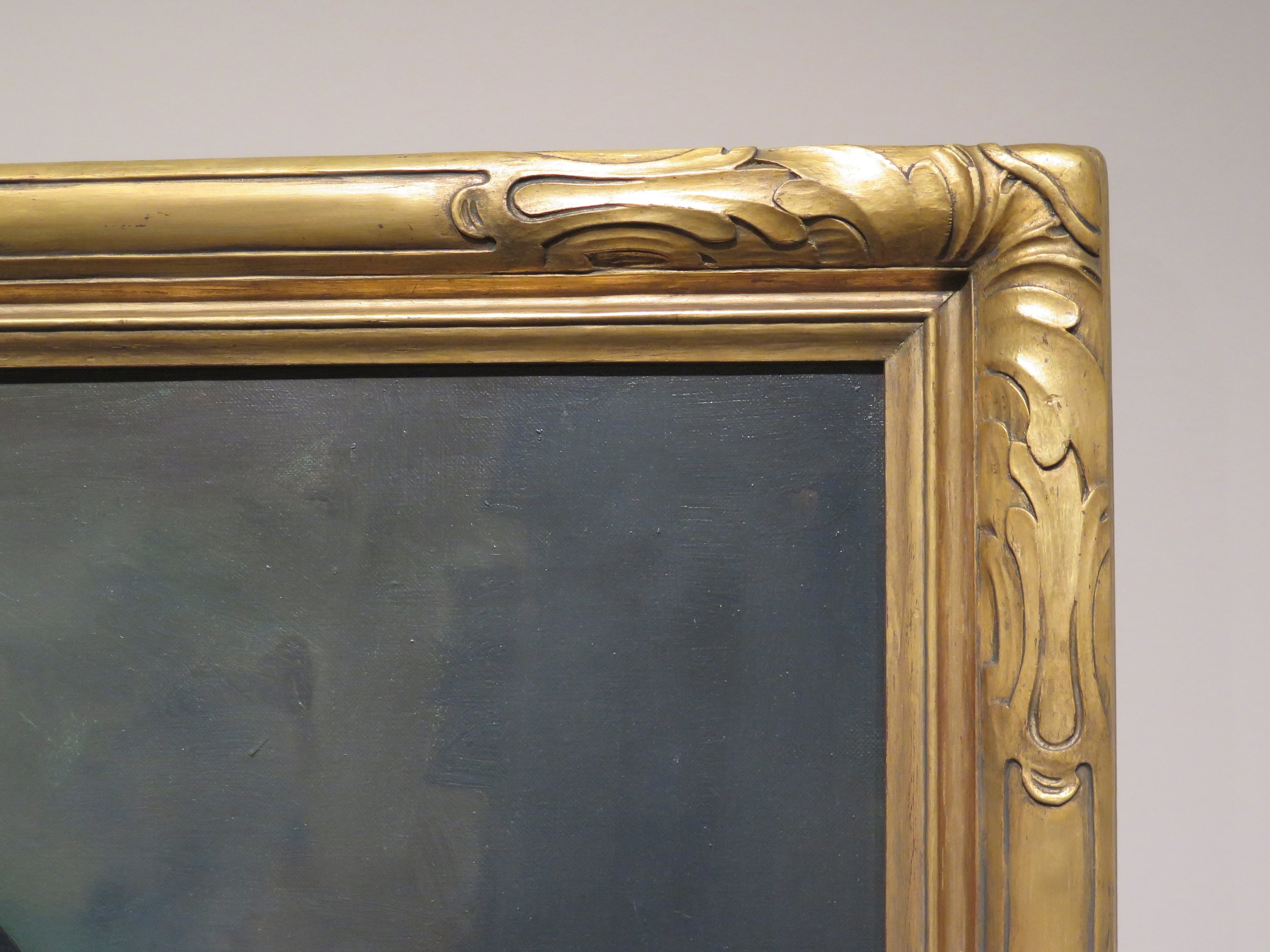
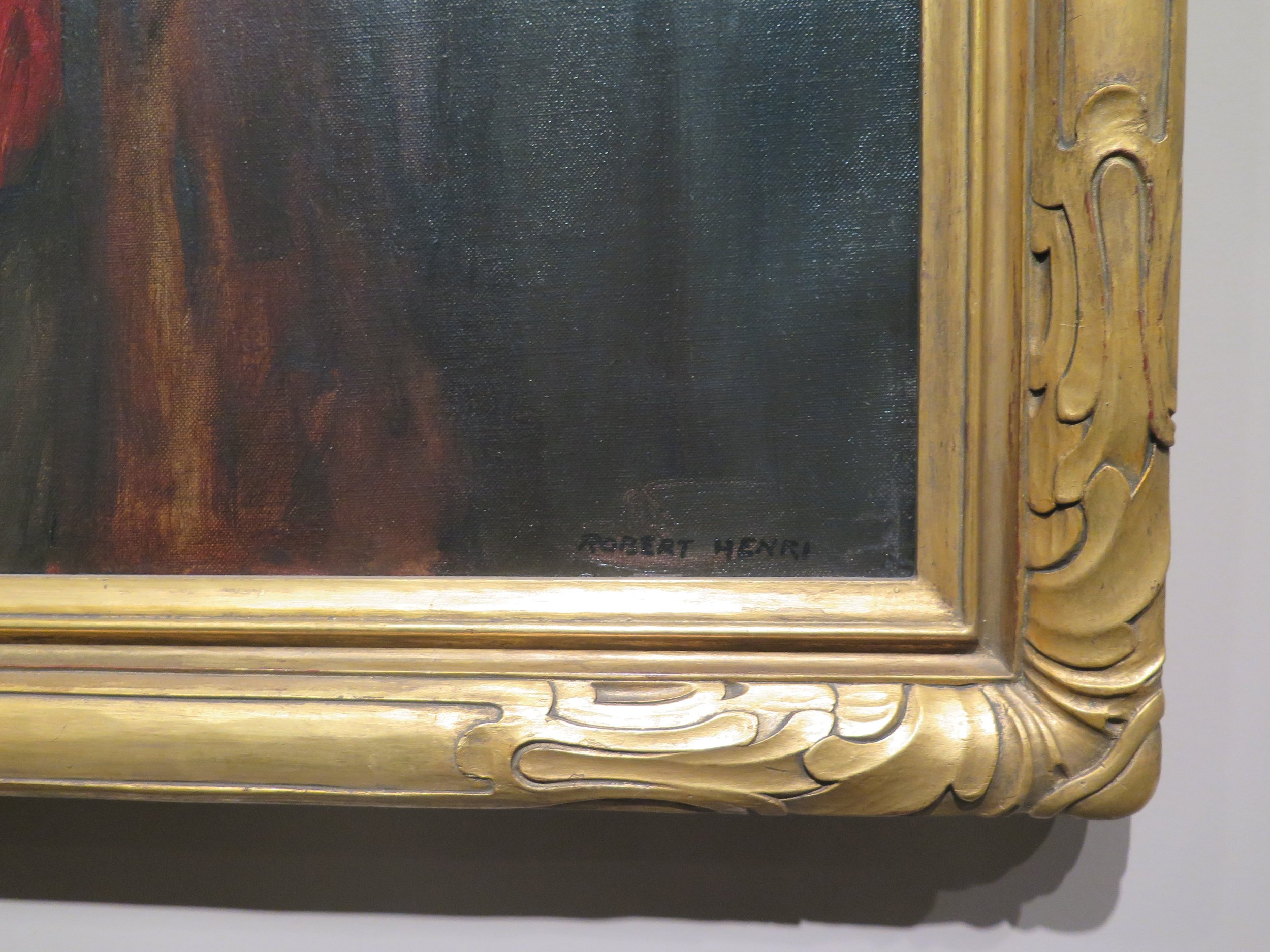
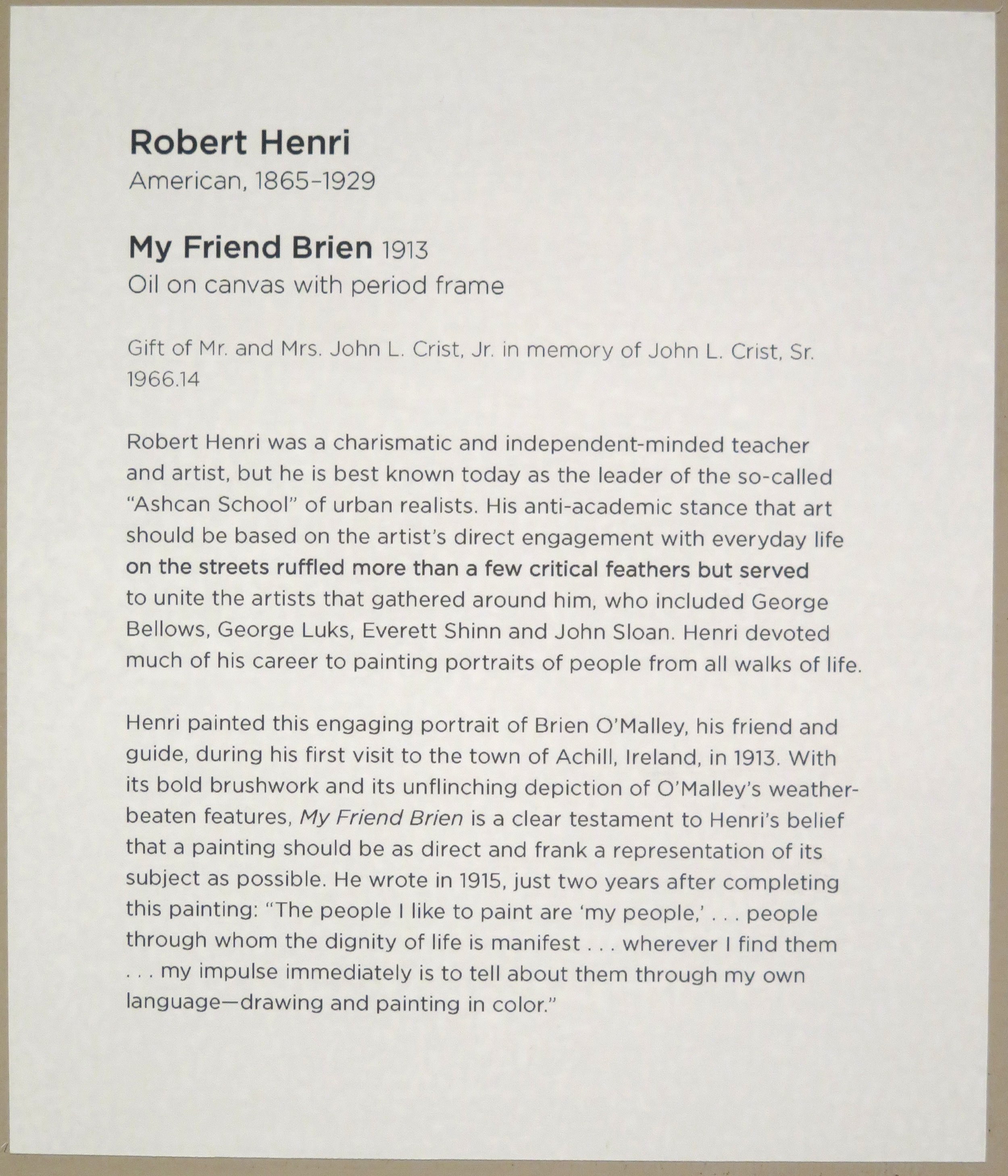
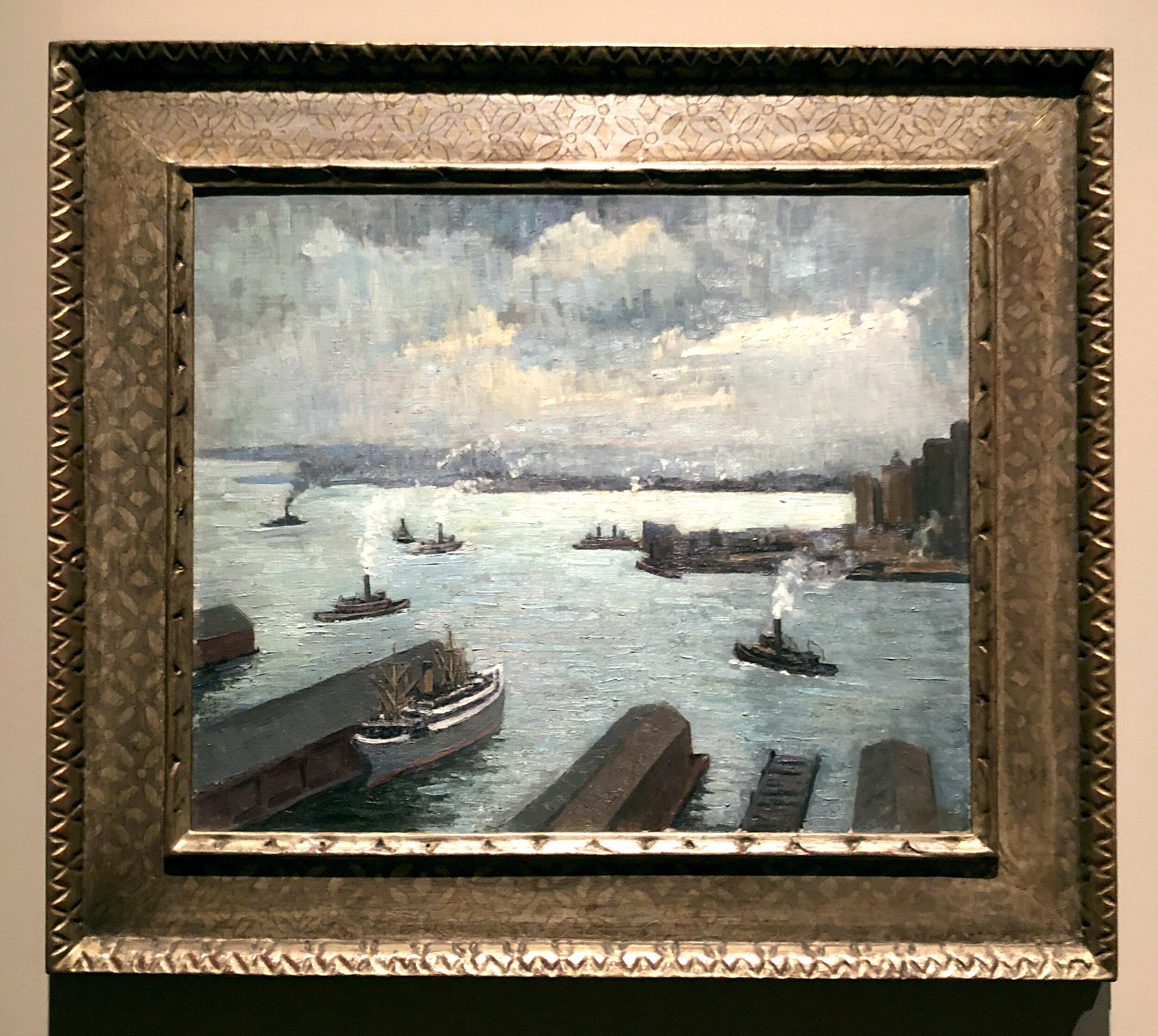
MAX KUEHNE (1880–1968)
East River Harbor, 1913, oil on canvas, 20" x 24-1/8" First-half 20th century American artist-made painting frame; Max Kuehne, maker. Cassetta profile with incised decoration, patinated white gold with matte gilded panel. Molding width: 4-1/2” Painting Gift of Roy Arnold 1996.60.1
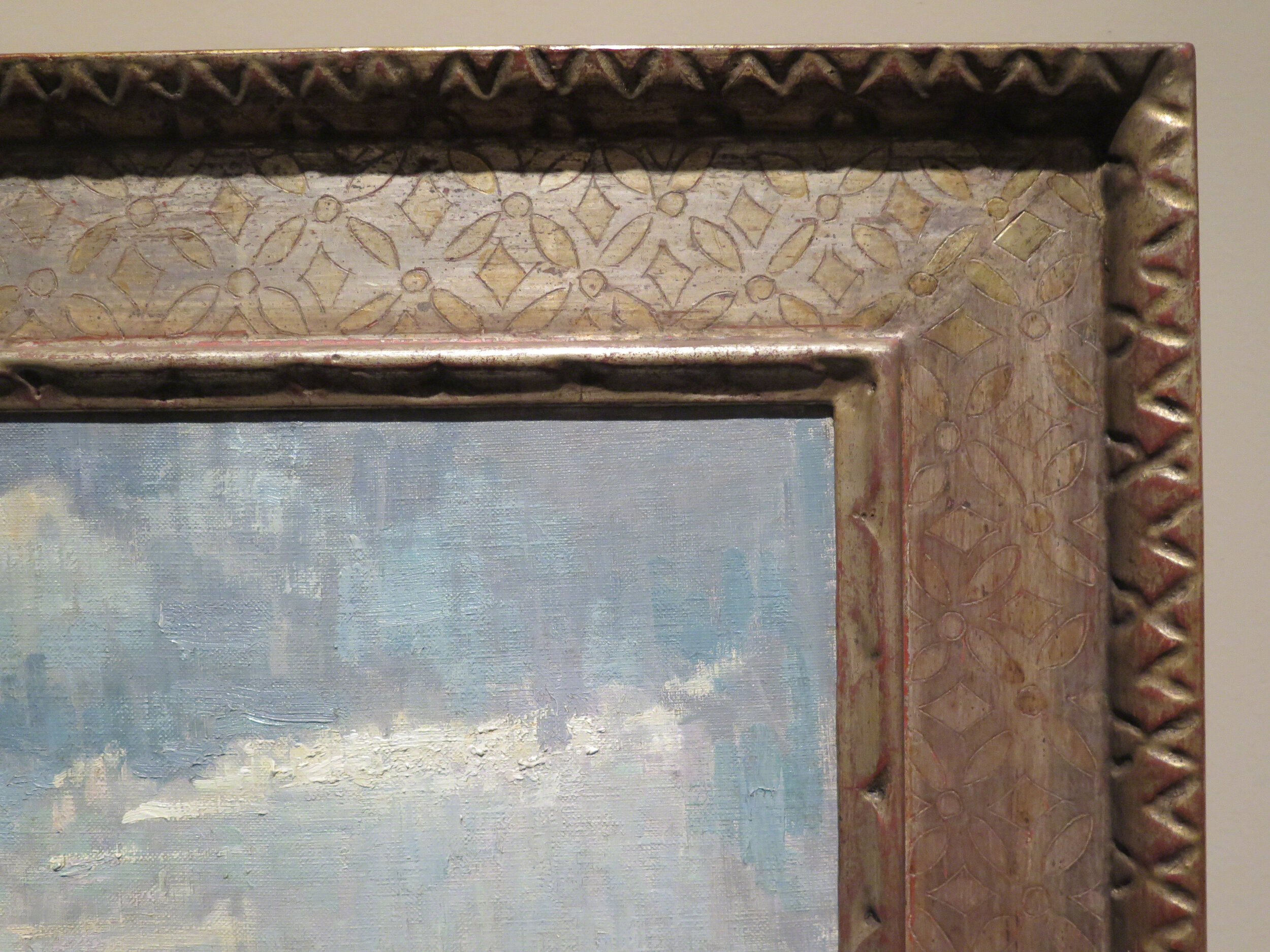
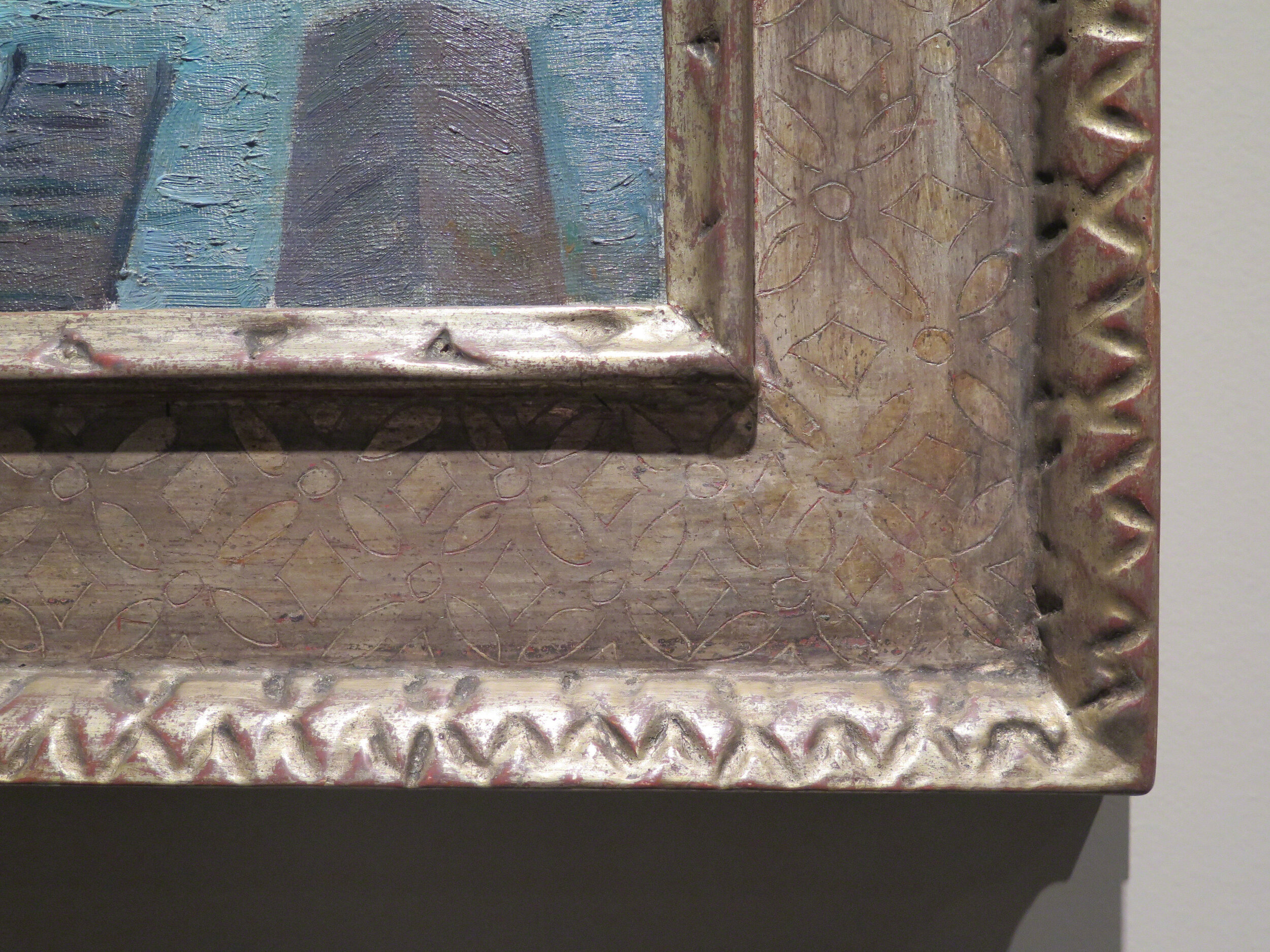
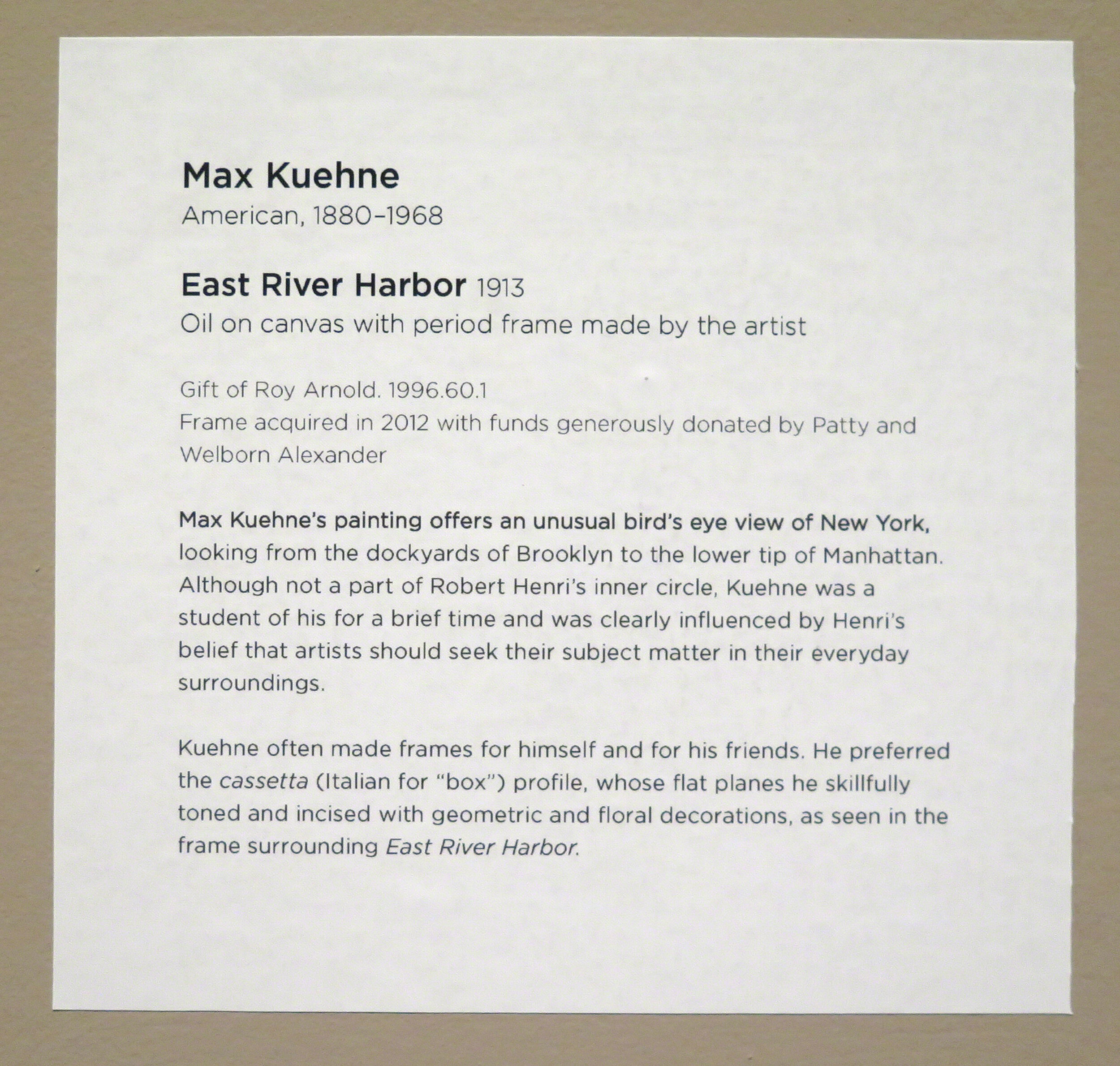
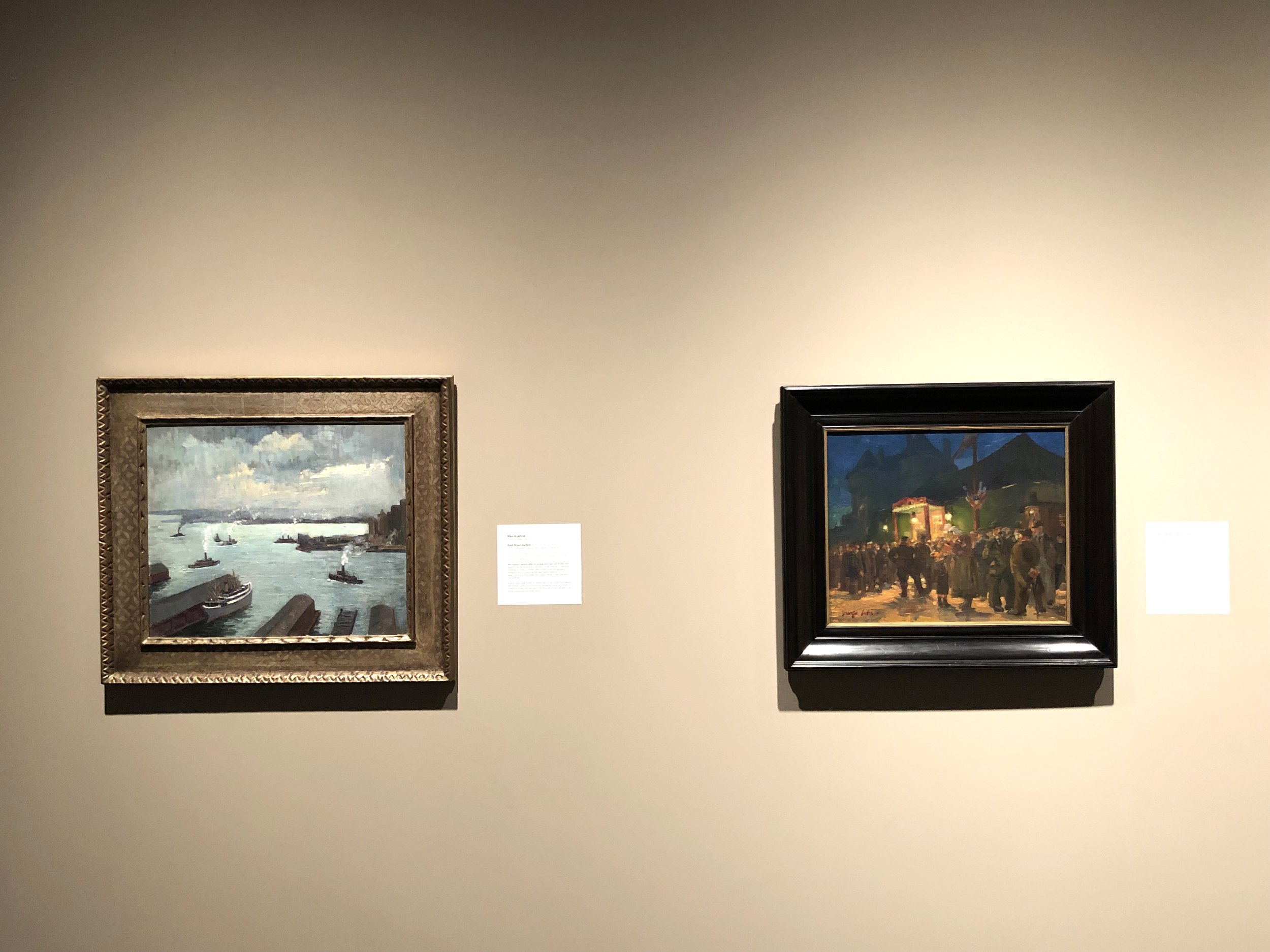
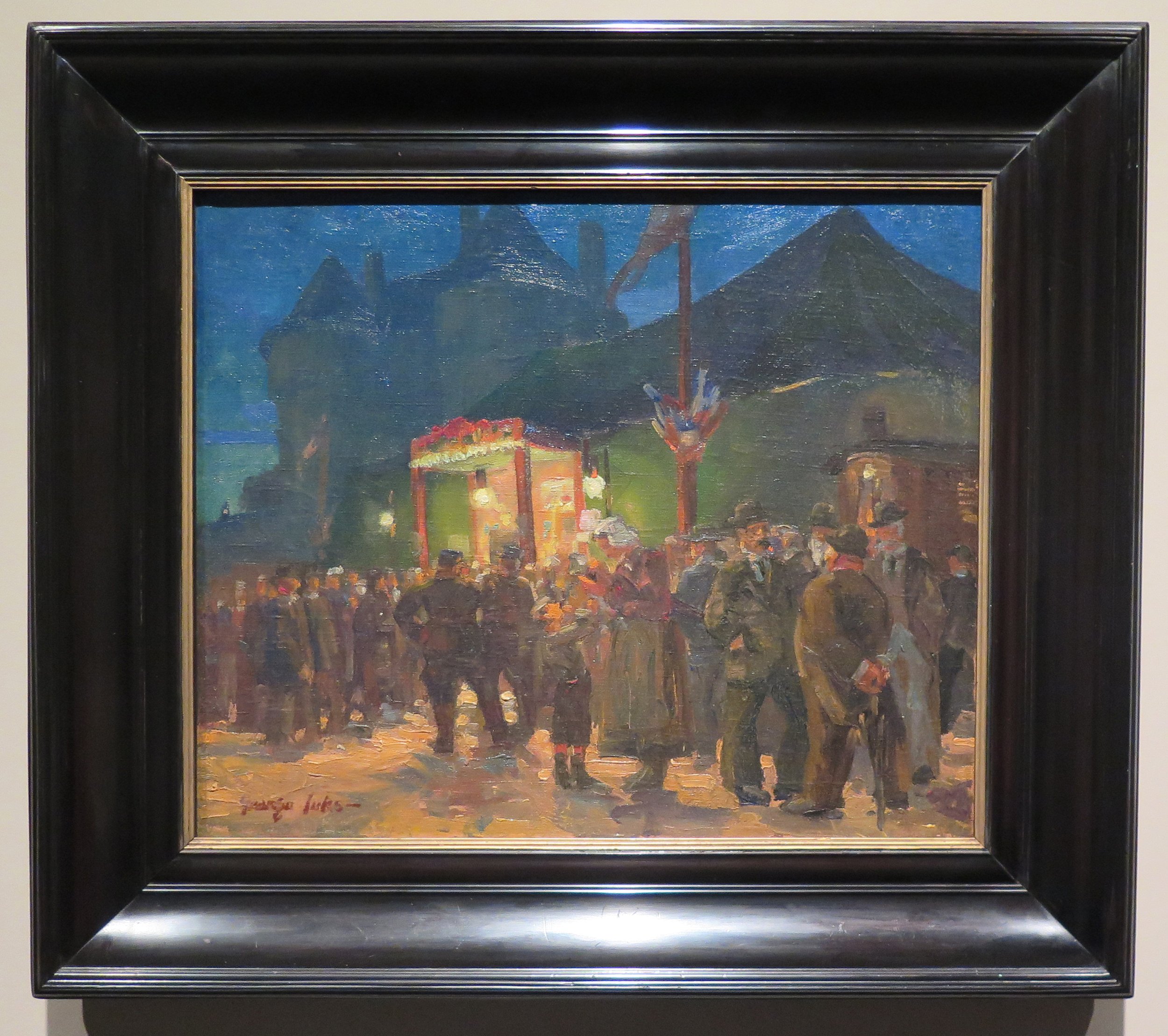
GEORGE BENJAMIN LUKS (1867–1933)
Carnival Scene, circa 1918, 18 x 22 in. Period late 19th-century Alpine frame, ebonized toned gesso on wood, molding width 4-1/4 in. “Like other artists of the Ashcan School George Luks made a name for himself by creating paintings of the people and neighborhoods of lower Manhattan. Luks was, perhaps, the member of the group whose paintings of this subject matter were the most coarse and unflinching. He was known to have been lively and cantankerous, a drinker and a carouser who found the hardscrabble lives of immigrants and loners more stimulating than those of the upper classes. In 1918 Luks painted Blue Devils on Fifth Avenue, a scene of French veterans on parade in New York (now owned by the Phillips Collection in Washington, D.C.), for an exhibition of paintings in support of Allied efforts in World War 1. The Mint Museum’s Carnival Scene, which includes figures clad in similar blue military garb as well as French flags, is likely a related work.” —Mint Museum label. Painting Gift of the Mint Museum Auxiliary. Period frame acquired in 2018 with funds generously donated by Betsy and Alfred Brand.

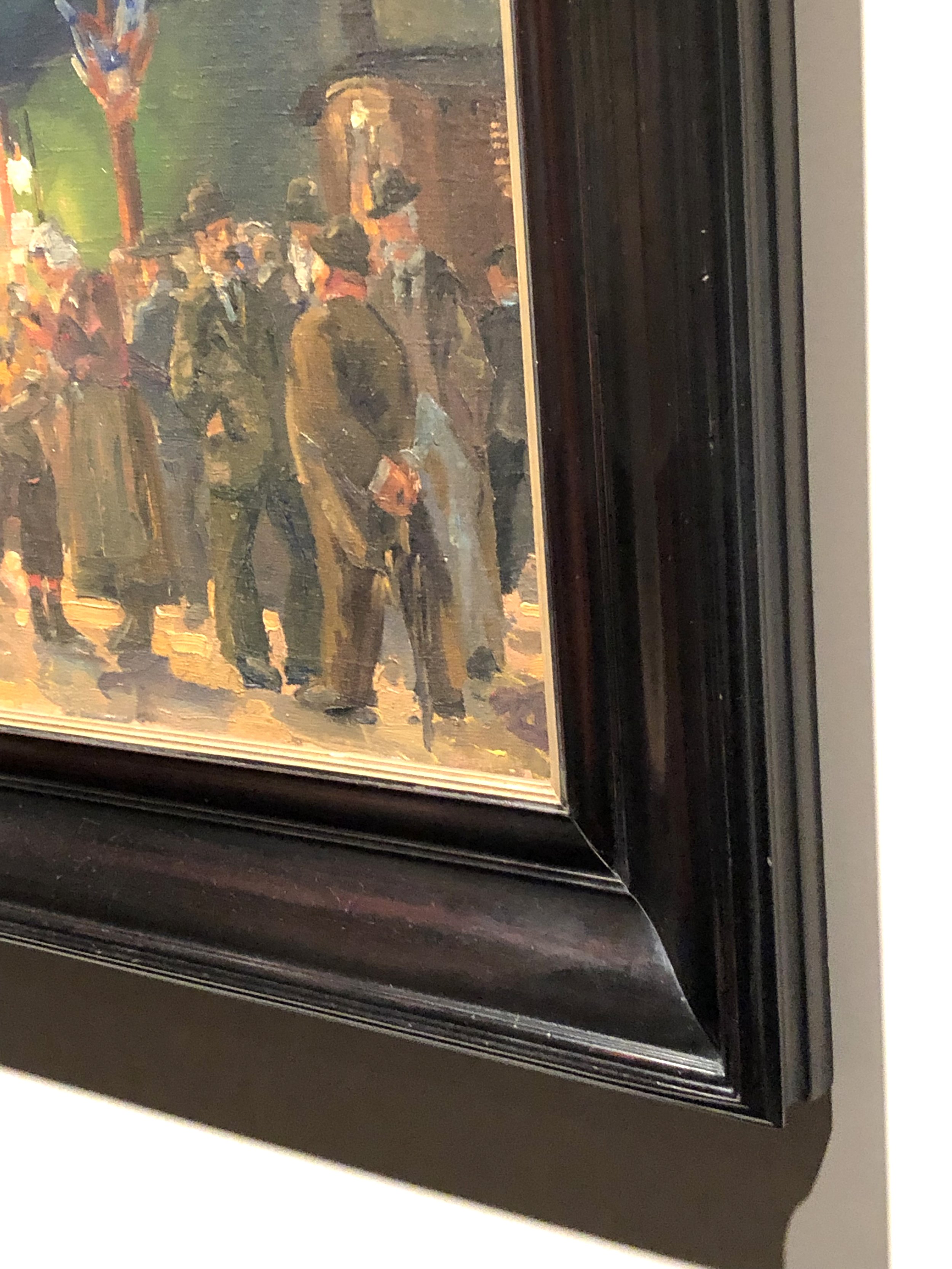
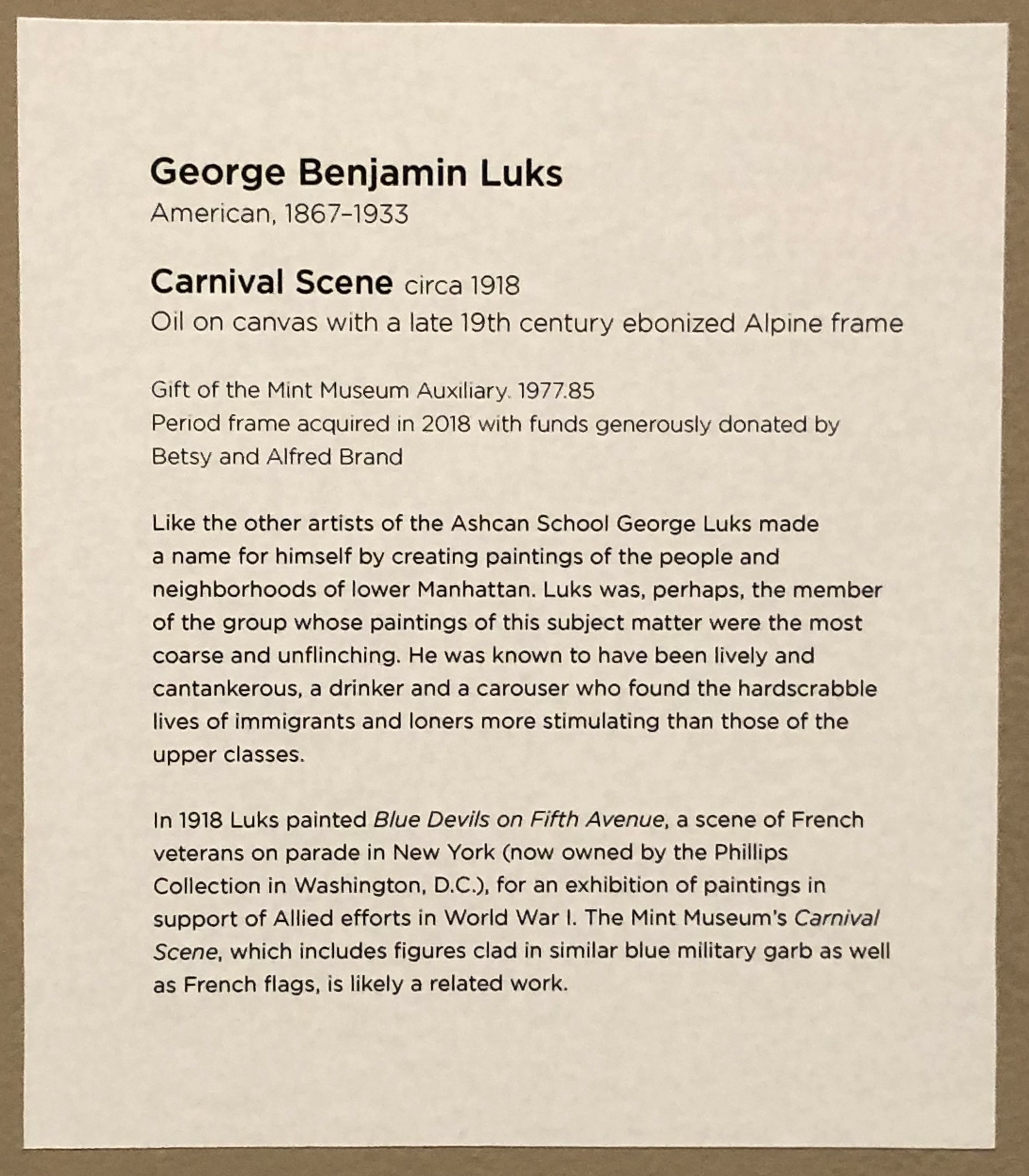
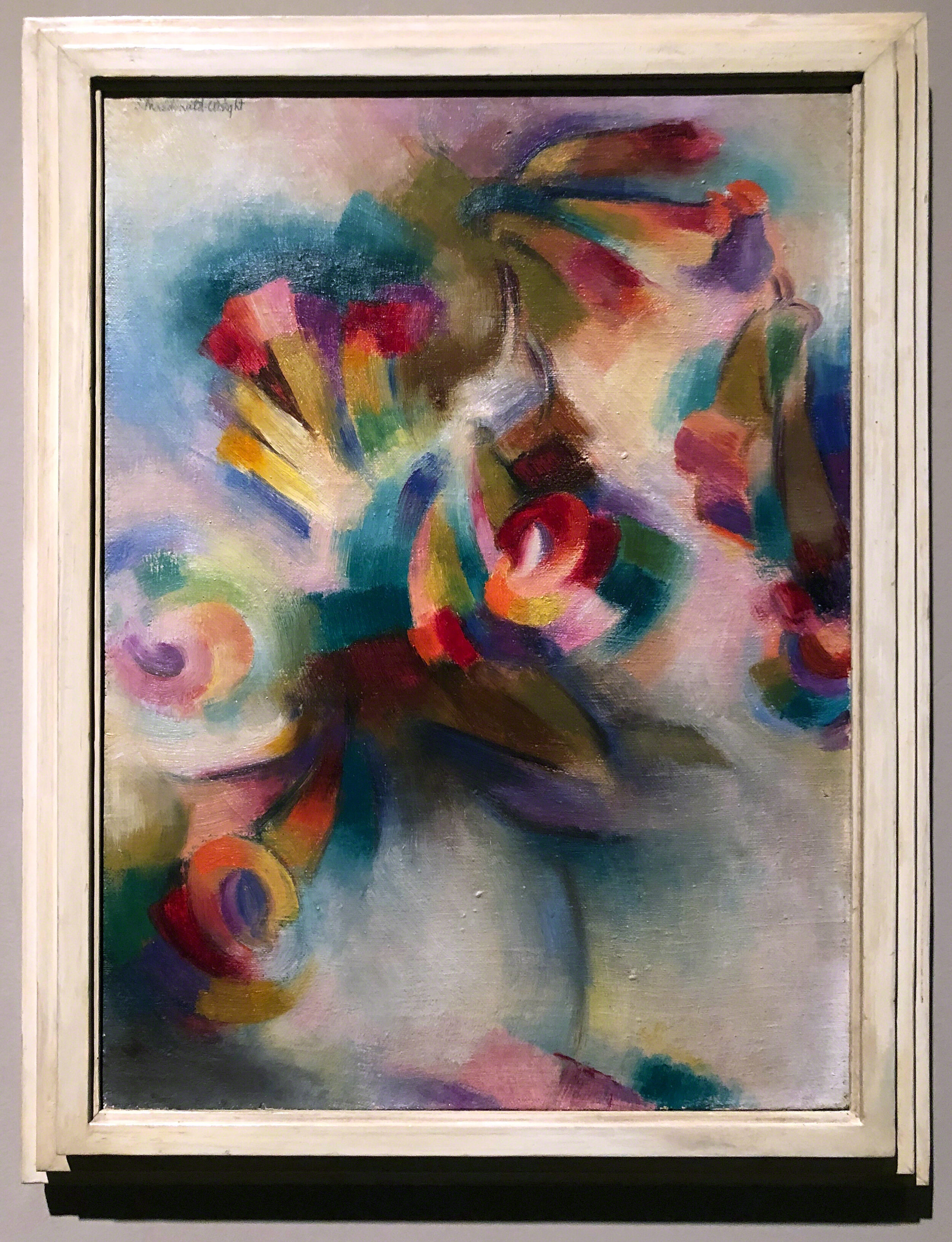
STANTON MACDONALD-WRIGHT (1890–1973)
Trumpet Flowers, 1919, oil on canvas, 18-1/8” x 13-1/8” Period Frame, c. 1920s American artist-made painting frame, reverse stepped profile, original paint on wood, molding width 1-5/8” "Trumpet Flowers" is a rare example of synchromism, a movement developed by the American artists Stanton Macdonald-Wright and Morgan Russell in Paris in 1913 that attempted to synthesize art and music through the use of color. The term itself means, simply, “with color.” The two artists believed that color, rather than line, should play a dominant role in their work and that this new style had the potential to evoke unique emotional and spiritual experiences. They drew inspiration from earlier European artists—including Joseph Mallord William Turner, Claude Monet, and Paul Cézanne—who were likewise interested in finding new ways to approach color and form. "Trumpet Flowers" was created around the time that Macdonald-Wright moved from New York to California, and just before he began to experiment more with new ideas about Eastern art and philosophy. It demonstrates his mastery of using shifts in tonal value and intensity to create a harmonious composition. The floral forms are arranged in sinuous curves and counter-curves that, combined with the dazzling passages of color, evoke a sense of motion and depth (what he called “bump and hollow”). The artist also suggests the passage of time, which unfolds rhythmically as the viewer’s eye follows the forms and changing color “notes” across the surface of the canvas.”
